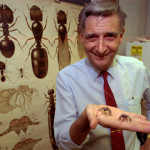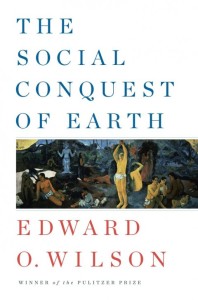New Fiction from Eddie Freeman: “The Skirt Fetcher”
Sadie was a do-gooder, someone who was aware of the deeply rooted systematic injustices that perpetuated oppression throughout the world, and who wanted to do something meaningful about it. She was a liberal cliché and she knew it. Sadie found it interesting how drugs caused the woman who lived behind the grocery store to give an outward physical representation to the inner processes of her mind. Which is to say, while most of us carted around incorrectly remembered personal histories, useless grievances, and unhelpful fantasies, this woman had found a way to bring her mental garbage into the physical realm; she filled shopping carts full of non-redeemable waste, trash which was result of overproduction which was caused by capitalism. Sadie could admit that she did not want the transient woman in her own apartment, and she didn’t believe handing money to the woman would be helpful, but almost involuntarily, Sadie cultivated empathy for the woman. Sadie’s mental garden of empathy was bathed daily in love, and attention, but it was admittedly hard for Sadie to share the fruits of this garden with anyone. Sadie strived to pass out her excess empathy at her workplace, as though her empathetic thoughts were lemons that grew in unneeded quantities in her front yard and could be left up for grabs in a plastic bag by the cash register. Sadie worked for Saint-Loup, a high-end clothing boutique.
A stocky woman, wearing expensive boots and a fashionable top entered the store. The woman maintained a powerful-yet-clumsy gait, as though she were important but unsure of herself.
“Villeparisis dress, size forty,” the woman said.
It took Sadie a moment to realize the woman was requesting a garment. Sadie fetched the dress from the back and brought it to the sale’s floor. The shade of the dress channeled a rosé targeted at hip young women. The dress had a sash in front which, if asked, Sadie would describe as sexy-Michelle-Obama chic. Had the designer not added a few almost imperceptible qualities, the piece would resemble something a punk girl could wear to prom to both sincerely celebrate and ironically comment on the occasion. The Villeparisis’ touch ensured the garment was worthy of a stylish and well-mannered rich woman. The outfit was cliché, original, traditional, and new, all at once. Though, in Sadie’s opinion, the garb was a few years out of style. The woman tried it on and nodded. Some women, who were spending upwards of four thousand dollars on a dress, wanted Sadie to spend the better part of an hour engaging in flattery. Sadie sensed that this woman wanted as little human emotion as feasible to seep into the interaction. The woman paid with a card, and Sadie learned her name was Rachel. When Sadie handed Rachel the bag containing the dress, Rachel grabbed it without a word and walked out.
Sadie, who was thirty years old, lived with her mother and younger brother in Napa. For a time, she had paid sixteen hundred dollars a month to rent a detached in-law unit, which consisted of four hundred square feet of livable space. That space had been cramped with her mattress and boxes containing psychology text books, much loved novels of her childhood and books she had not yet had the chance to read. Most nights, her seventy-year-old female landlord invited her into the main house to watch TV. Sadie accepted. After a year and half of watching murder shows on the couch of her landlord, she figured that if she was going to spend her nights watching TV with an older lady, she might as well save sixteen hundred dollars a month and live with her mom.
At dinner that night, a pizza her brother brought home from his job at King’s Pizza, Sadie recounted her interaction with Rachel. Though their exchange with Rachel was wordles, Sadie believed she had allowed her acceptance of Rachel to shine through her eyes.
“It’s possible she just didn’t want to talk,” her brother, said. “Like, maybe she was holding in a fart.”
When Sadie was twenty-one, she had graduated from the University of Irvine with a Bachelors in Psychology. She knew that to utilize her degree and training, she would need either a masters or a doctorate. Instead of immediately applying to graduate school, Sadie increased her hours at Target. She had no illusions about the American health care system. She knew that an individual’s insurance might cover a year of therapy sessions, but by the time a provider had an opening, six months of that year had passed, and then the individual might be seen less than once a month. Sadie daydreamed about opening her own clinic where financially strapped people could walk in and receive free therapeutic attention, but she also knew that earning a doctorate would put her in six figures in debt. As a woman in her early twenties, she had believed she was using everything she had learned from the university when she helped Target customers, some of whom could clearly benefit from mental health services. She gave them as much validation and encouragement as she could. For Sadie, the logical next step was to work for a high-end clothing boutique that paid its employees more, and had fewer customers. That way, Sadie could shower the relatively small number of shoppers with meaningful attention. Sadie had recently begun working for Saint-Loup. She had embarked on her dream job. She was beginning to understand that her brother and mother viewed her life choices differently.
Two weeks later, Rachel returned to Saint-Loup. She said was wanted a conservative cocktail dress, something that would be appropriate for her son’s birthday party. Rachel had offered a detail about her personal life and Sadie would not shirk from the opportunity to support her.
“I couldn’t imagine being a mother. The cooking, cleaning, waking the kids up, being a chauffeur, it’s like you work twelve jobs,” Sadie said.
“My son is twenty-four,” Rachel said.
Sadie nodded empathetically.
Sadie wanted to be absolutely present. With her facial expression, she yearned to say that even if Rachel was addicted to pain pills, even if she interacted with her child as little as possible, even if she spent every day burning through her husband’s money, and had never had a job of her own, Sadie would give the woman something that she lacked-something that she needed. She smiled as though she would give her soul to Rachel, as though, if she had her druthers, she would run away with Rachel to a concert, a night club, or a cabin in the woods, where the two friends would share with each other, from the infinite patience dwelling inside of them, except, it wouldn’t really be patience, because patience wasn’t needed with friends who cared so deeply about each other.
Rachel found a dress, tried it on, and decided not to buy it.
Sadie’s mom made turkey chili for dinner that night. Her brother Evan ate quickly, putting away more than his two female family members combined.
“At work today, this old boomer was screaming, you make people eat out of a box at this restaurant? Cause I accidentally entered his order in as to-go. I put his pizza on a pan and he was fine. Anyway, it’s too bad you weren’t there Sadie. You could’ve given him your phone number, and told him that when he woke up in the middle of the night, weeks later, upset that his pizza was in a box, he could’ve called you, and received comfort and support,” Evan said.
His smile indicated that he had thought up this joke hours ago and had waited all day to deliver it at the world.
“And it’s too bad you’re not a stand-up comedian, because humanity would benefit immensely from your witty observations on life,” Sadie said.
After dinner, Sadie went to her bedroom and browsed Tinder. The first profile she saw belonged to Tony, a man she knew in high school. Sadie acknowledged the significant drawbacks involved with online dating in her hometown. She swiped left on Tony and blocked his profile. Almost immediately, her phone rang. She cursed herself for maintaining the same phone number since she was fourteen years old.
“Yes?” Sadie said.
“It’s nice to hear your voice,” Tony said.
Sadie said nothing.
“I’m wondering if you told people… about our thing… because, I’m an important person in tech now. … I want to know you’re not disparaging my reputation,” Tony said.
“Oh,” Sadie said.
“If you told anyone, you should tell them you forgive me.”
“I don’t forgive you,” Sadie said.
She hung up her phone and blocked the number. Once, when Sadie was in high school, she had found Tony attractive. He invited her to his house when his parents were out of town. She drank the whiskey and cokes he handed her. She had been able to keep her clothes on, but he had forced himself on top of her, grabbed parts of her body, penetrated her with his fingers, and brought himself to completion. At the time, she told no adults of the incident.
At the store the next morning, Sadie noticed a short man in a starched, tucked in, checkered dress shirt, and grey slacks. Sadie asked a number of times if he needed help, but he always demurred. He was content to watch the store while writing things on his phone. The other employee on the sale’s floor ignored the man completely.
A couple in their sixties walked in. The woman wore heels, faux leather pants, and a flowy grey cashmere sweater over a white top. The man, who was shorter than his wife, dressed in worn blue jeans and an old Kirkland flannel, as though proudly flaunting his wife’s fashionable inclinations. The woman admired a long, Verdurin scarf. Sadie stood by eagerly. The man locked eyes with her.
“This would make a great addition to my rape kit,” the man said.
“He’s so wild,” the woman said, and patted his arm.
“I’m looking at woman’s clothes, I just want my life back,” the man said.
“We admire your sacrifice,” Sadie said.
After the couple left, Rachel entered the store. There were customers who called out to Sadie because of their obvious need, a need that perhaps only Sadie could perceive. Sadie wanted a valid connection with Rachel’s core. Rachel exited the fitting room wearing a twelve-hundred-dollar sweater.
“It looks fine,” Sadie said.
Rachel reentered the dressing room. As Rachel changed, Sadie thought about a time when she was a child, when she viewed her friends as a natural resource that enabled her to live, no less necessary to her existence than clean drinking water. Sadie saw her current life as relatively empty. She had excess energy to devote to Rachel, but had absconded from her duty.
“I’m sorry. I shouldn’t have said you looked fine. You looked absolutely incredible in the sweater. It was stunning,” Sadie said.
“It’s okay,” Rachel said.
“No, you’re an incredible woman, and the sweater brought out your incredible nature. I should’ve told you that you’re incredible. I’m just off today,” Sadie said.
Rachel said nothing.
Sadie took a deep breath.
“I’m off today because this boy sexually assaulted me in high school and last night he called me on the phone,” Sadie said.
“Oh, I hope the rest of your day goes better,” Rachel said.
Rachel looked like there was more she wanted to say, but whether her unspoken words contained support or an admonishment, Sadie could not tell. She left the store. Sadie had not noticed, but the man in the starched shirt was typing furiously on his phone during this interaction.
The next customer Sadie helped was a blond hipster woman who wore tight blue jeans, black chunk heels, and a grey V-neck shirt. The woman was beautiful and she had expertly applied her makeup, but compared to the other customers, her clothes were heavily used. The woman was younger than Sadie. She tried on a number of La Petite Bande tops. Finally, she approached Sadie, holding a La Petite Bande garment.
“Do you ever have sales, or offer discounts?” the hipster woman asked.
Sadie held the blouse in her hand. She looked at the woman and understood how badly she wanted it.
“Would a seventy-dollar discount work?” Sadie asked.
“Yeah,” the woman said.
“Some of our clothes get stained with lipstick, when people try them on. The lipstick comes out easy, with just a little bit of vinegar. If this top had a stain on it, I would have to give you the discount,” Sadie said.
The woman brought the top to her mouth and kissed it.
“That works,” Sadie said.
She rung up the blouse, subtracting seventy dollars from the total.
On Tuesday, Sadie had the day off. She went for a run and was back in her apartment, covered in sweat, getting ready to take a shower, when her phone rang.
“Sadie, this is Celine Diaz.”
Celine was the owner of Saint-Loup. Sadie had met her only once before, during her job interview. A woman named Ashely worked as the store manager, handling all of the day-to-day operations. Sadie had heard rumors that Celine was a multi-millionaire, if not a billionaire, who had purchased Saint-Loup during a period of brief-but-intense interest in clothing retail. According to the rumors, Celine had recently become interested in learning how to fly a helicopter, opening sustainable sushi restaurants, and making wine. Saint-Loupe was receiving less attention.
“I want to thank you for your hard work and attention to detail when arranging clothes,” Celine said.
“You’re welcome,” Sadie.
“Do you know who Marcus is?” Celine asked.
“No,” Sadie said.
“That does explain some things. Marcus oversees a lot of my business ventures. He acts as my eyes-on-the-ground when I’m otherwise occupied. He informed me that you had told a customer about a sexual assault you experienced. He mentioned the customer was Rachel Feldman. She’s been a loyal patron for years. He took the liberty of calling her and she agrees that we should let you go. Marcus also said, that you advised a customer to damage a top in order to receive a discount,” Celine said.
“Yes, I did those things,” Sadie said.
“We’re going to discontinue your employment, but the problem is, we don’t have anyone to replace you at this moment. If you’re willing to stay on for a few weeks, I’ll give you a good reference. You can quit right now, but then you wouldn’t be able to apply for unemployment,” Celine said.
“I can stay,” Sadie said.
Sadie wasn’t in a position to turn down any income.
Sadie put on a holey pair of jeans and a Lou Reed t-shirt. For a moment, she fantasied about wearing the outfit to her remaining shifts. She imagined the conversations the outfit would spark. Sadie loved an ice cream sundae that was available at a popular fast-food restaurant, but she found it difficult to justify the treats’ plastic cup, which would outlive her. Being fired was a good justification. She bought the sundae and began walking around downtown.
She passed a number of restaurants that had only a few, if any guests, which made sense, as it was a dead time between late lunch and early dinner. The outside patio of Baddiel’s was completely packed. A sign indicated that the space was reserved for a private event. Sadie sat on stone bench in front of the patio and surveyed the scene. Many of the men gathered were guys in their twenties, who wore dress shirts, and gave arrogant looks to the other people present, as though every man thought they were the next Mark Zuckerberg. Within five years, the most interesting aspect of the other people present would be the stories they would tell about the future tech celebrity, the man they were now sitting across from. Sadie guessed correctly that she was looking at tech workers. A few of the men were in their fifties, but they had hip haircuts and were in good shape. A youthful and industrious energy permeated the group. A few women were present but Sadie was able to get a good look at only one lady, a redhead with colorful Ed Hardy style tattoos. She wore lipstick and kept a cocky smile, as though she was more than used to holding her own in a roomful of men. Despite her loneliness, Sadie was not in the habit of openly gawking at groups of strangers. She assumed some men noticed her, in her terrible jeans and questionable t-shirt, but something about the scene had piqued her curiosity. She wouldn’t stop staring until she determined what it was. Most of the men sat at one of five giant tables, conversations were conducted across several tables at once. At the far end of the patio, away from the loud men, a pair of women sat at a two-seater. One of the women appeared to be in her late fifties or early sixties, the other in her thirties. The ladies looked at one another with a laser focus, but it didn’t seem as though they were particularly enjoying each other’s company. Sadie assumed they were afraid to look at the guys. The older woman was Rachel.
Two men wearing dress shirts exited the patio and walked in front of Sadie.
“Excuse me. Sorry, I have an awkward question. Like a really awkward question. Why are those two women over their sitting by themselves?” Sadie asked.
“That’s our boss, Rachel, and her secretary,” one of the men said.
“And why are they sitting alone?” Sadie asked.
The men exchanged looks. Their facial expressions indicated had had a few drinks each.
“Rachel is a little girl who took on a man’s job. We make predictions about the specific demand for medical equipment over the next sixteen quarters. Our work impacts a billion-dollar industry, but Rachel doesn’t even know what an algorithm is. She can’t spell it,” the man said.
“I got my first job when was I seventeen working for Jack in the Box. My boss there was better than Rachel,” the second man said.
One of the men on the patio caught the eye of the guys talking to Sadie. With a happy drunk grin, he pointed to Rachel. He had inferred who they were talking about.
“Our boss has Downs syndrome. That’s why she’s alone,” the man on the patio said.
He spoke loudly. It was likely Rachel heard him and possible Rachel saw Sadie, though she tried to hide behind the men she was talking to. Not a single person spoke in Rachel’s defense.
During Sadie’s last shift, Rachel walked in. She surveyed the clothing, and refused to look at Sadie. Ashely, the only other employee present, was helping a customer. After Ashely finished, she ran to the back to complete her managerial tasks. Rachel finally approached Sadie.
“Sachar skirt, red, size forty,” Rachel said.
She went to the back to fetch the skirt.



